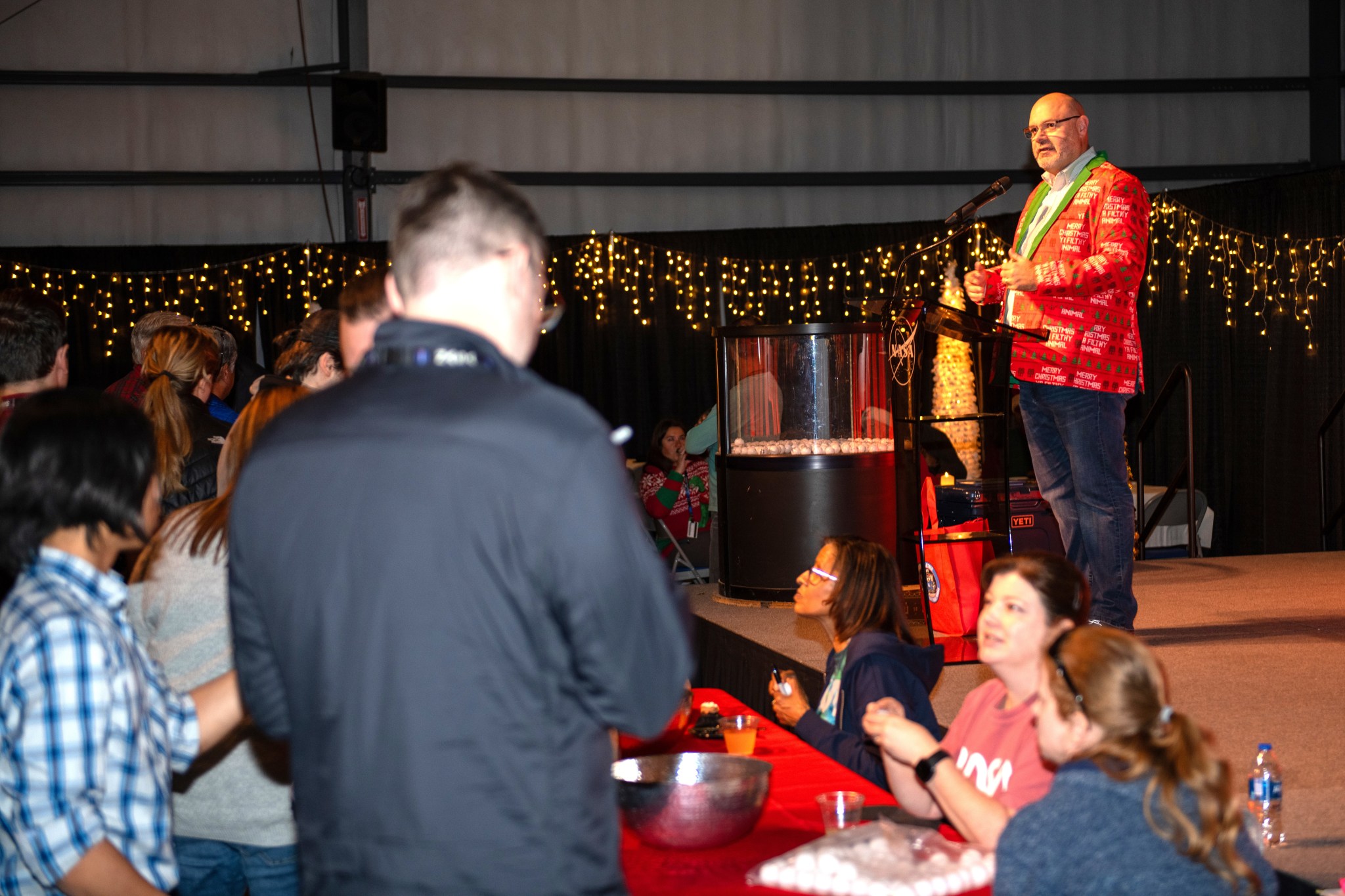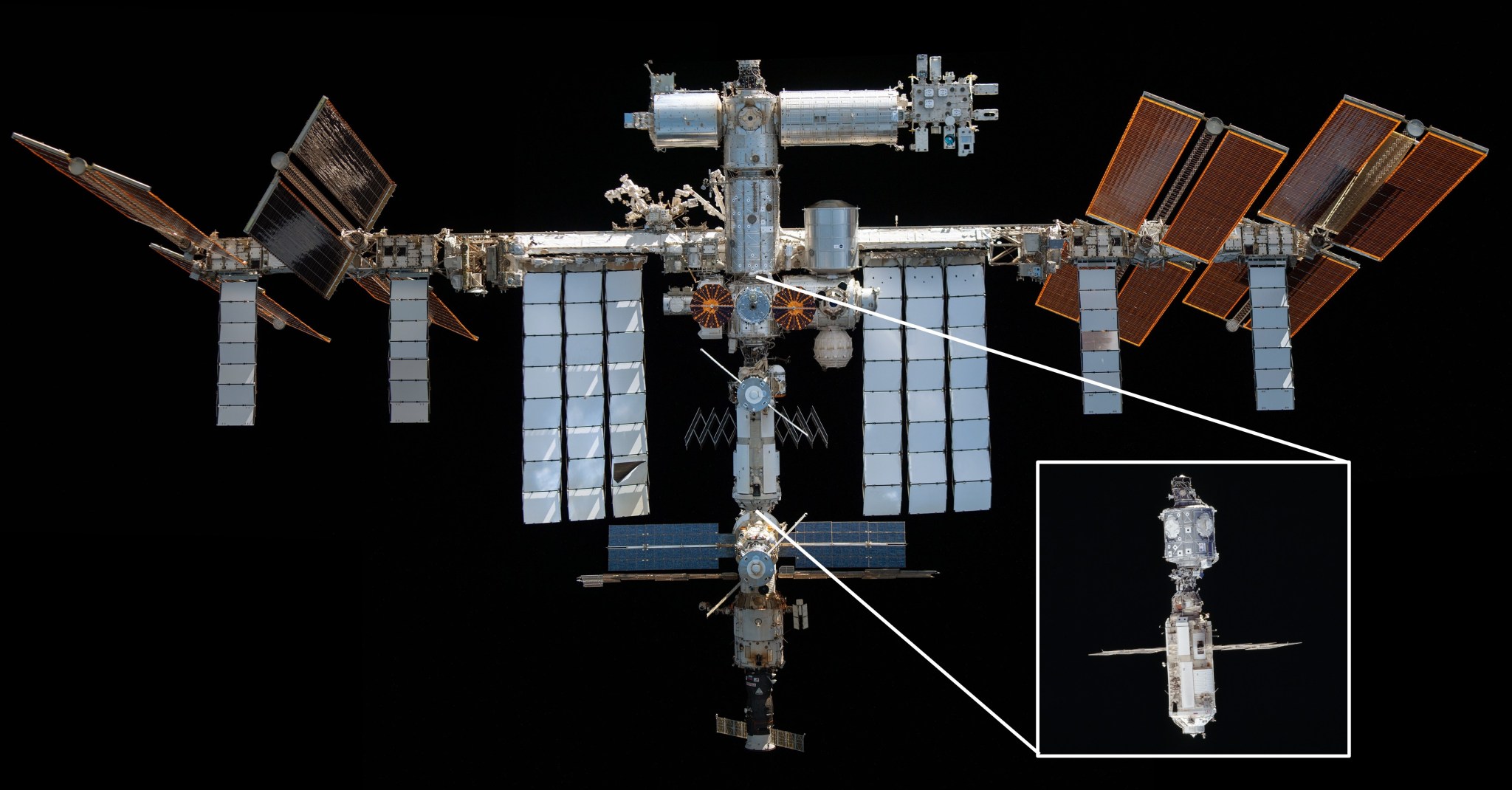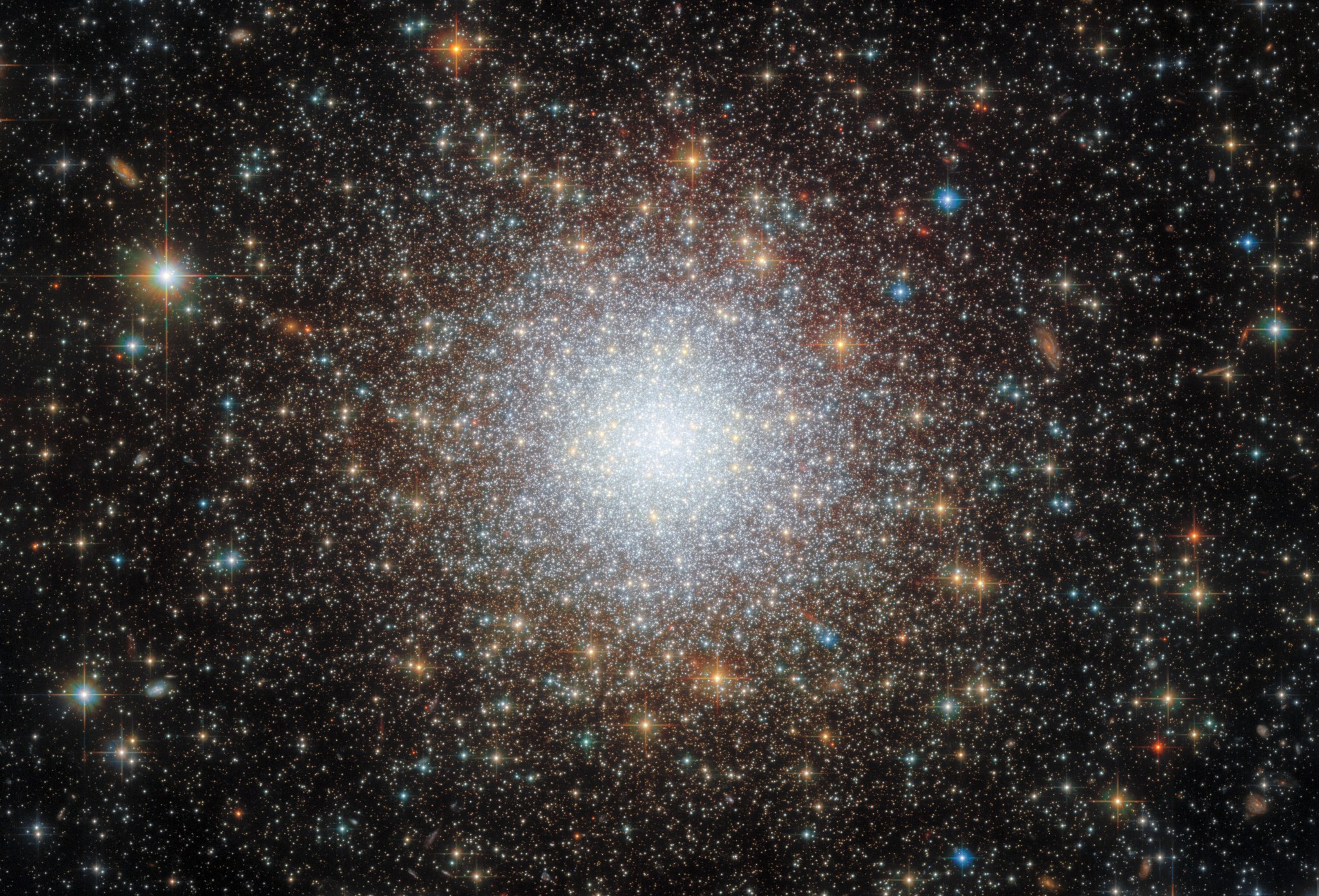Marshall Team Members Celebrate Holiday Season
By Jessica Barnett
For hundreds of team members at NASA’s Marshall Space Flight Center, “eat, drink, and be merry” was the afternoon theme for Dec. 7.
The center hosted a holiday celebration in Activities Building 4316, complete with food, door prizes, and plenty of opportunity to wish one happy holidays. Acting Center Director Joseph Pelfrey welcomed team members to the festivities with a brief recap of 2023 and look forward to 2024.
“I was thrilled to see such an excellent turnout at the holiday reception,” Pelfrey said after the reception. “This has been an exceptional year for us at Marshall, and it’s important we take time this season to celebrate our successes and recharge for 2024.”
Barnett, a Media Fusion employee, supports the Marshall Office of Communications.
IXPE Marks 2 Years of Groundbreaking X-ray Astronomy
By Rick Smith
On Dec. 9, astronomers and physicists commemorated two years of landmark X-ray science by NASA’s IXPE (Imaging X-ray Polarimetry Explorer) mission.
IXPE is the joint NASA-Italian Space Agency mission to study polarized X-ray light. Polarization is a characteristic of light that can help reveal information about where that light came from, such as the geometry and inner workings of the ultra-powerful energy sources from which it emanates.
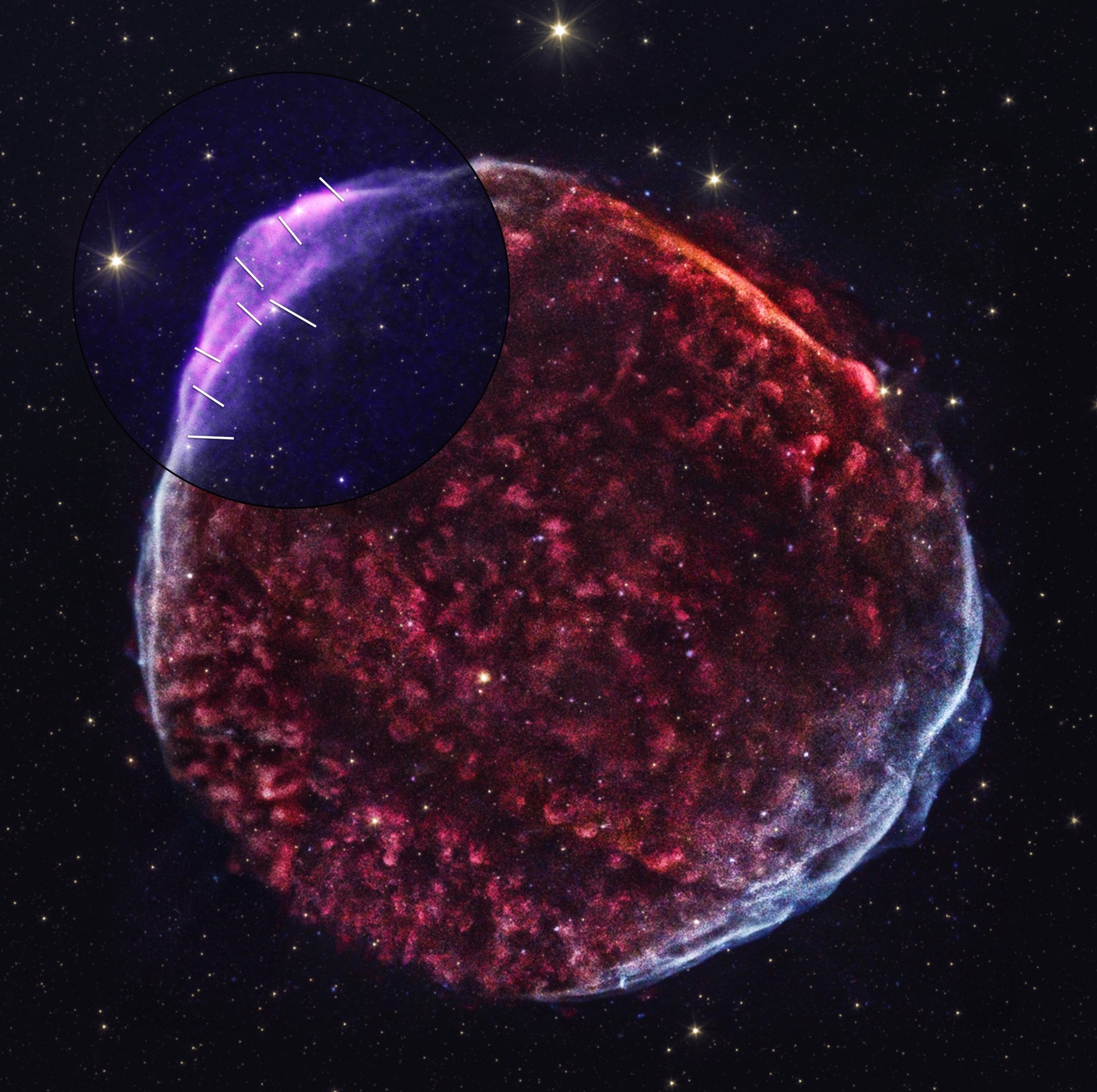
Launched Dec. 9, 2021, IXPE orbits Earth some 340 miles high, studying X-ray emissions from powerful cosmic phenomena thousands to billions of light-years from Earth, including quasars, blazars, remnants of supernova explosions, and high-energy particle streams spewing from the vicinity of black holes at nearly the speed of light.
“Adding X-ray polarization to our arsenal of radio, infrared, and optical polarization is a game changer,” said Alan Marscher, a Boston University astronomer who leads a research group that uses IXPE’s findings to analyze supermassive black holes.
Martin Weisskopf, the astrophysicist who led the development of IXPE at NASA’s Marshall Space Flight Center and served as its principal investigator until his retirement from NASA in spring 2022, agreed.
“There can be no question that IXPE has shown that X-ray polarimetry is important and relevant to furthering our understanding of how these fascinating X-ray systems work,” Weisskopf said.
Scientists have long understood, for example, the fundamentals of blazars such as Markarian 501 and Markarian 421. A blazar is a massive black hole feeding off material swirling around it in a disk, creating powerful jets of high-speed cosmic particles which rush away in two directions perpendicular to the disk. But how are those particles accelerated to such high energies? IXPE data published in November 2022 in the journal Nature identified the culprit at Markarian 501 as a shock wave within the jet.
“This is a 40-year-old mystery that we’ve solved,” said Yannis Liodakis, a NASA Postdoctoral Program researcher at Marshall. “We finally had all of the pieces of the puzzle, and the picture they made was clear.”
IXPE also conducted unprecedented studies of three supernova remnants – Cassiopeia A, Tycho, and SN 1006 – helping scientists further their understanding of the origin and processes of the magnetic fields surrounding these phenomena.
IXPE is even shedding new light on fundamental mechanisms of our own galaxy. According to studies IXPE conducted in early 2022, Sagittarius A*, the supermassive black hole at the center of the Milky Way, woke up about 200 years ago to devour gas and other cosmic detritus, triggering an intense, short-lived X-ray flare. By combining data from IXPE, Chandra, and the European Space Agency’s XMM-Newton mission, researchers determined the event occurred around the start of the 19th century.
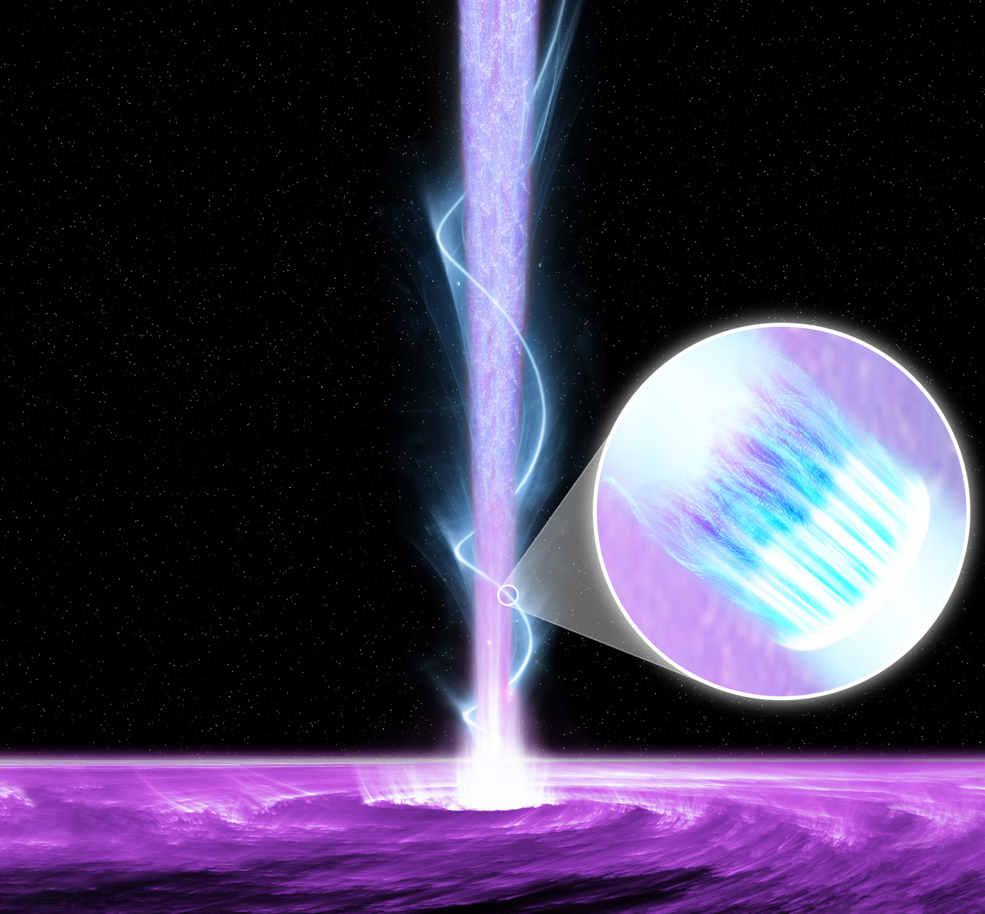
“We know change can happen to active galaxies and supermassive black holes on a human timescale,” said IXPE project scientist Steve Ehlert at Marshall. “IXPE is helping us better understand the timescale on which the black hole at the center of our galaxy is changing. We’re eager to observe it further to determine which changes are typical and which are unique.”
IXPE also has supported observations of unanticipated cosmic events – such as the brightest pulse of intense radiation ever recorded, which swept through our solar system in October 2022. The pulse stemmed from a powerful gamma-ray burst likely to occur no more than once in 10,000 years, researchers said. Backing up data from NASA’s Fermi Space Telescope and other imagers, IXPE helped determine how the pulse was organized and confirmed that Earth imagers viewed the jet almost directly head-on.
Perhaps most exciting to space scientists is how IXPE data is upending conventional wisdom about various classes of high-energy sources.
“So many of the polarized X-ray results we’ve seen over the past two years were a big surprise, tossing theoretical models right out the window,” Ehlert said. “Seeing results we didn’t anticipate sparks new questions, new theories. It’s really exciting!”
That excitement continues to build among IXPE partners around the world. In June, the mission was formally extended for 20 months beyond its initial two-year flight – meaning IXPE will continue to observe high-energy X-ray emissions across the cosmos through at least September 2025.
The new year also will mark the start of the IXPE General Observer Program, which invites astrophysicists and other space scientists around the world to propose and take part in studies using the IXPE telescope. Beginning in February 2024, as much as 80% of IXPE’s time will be made available to the broader scientific community.
IXPE is a collaboration between NASA and the Italian Space Agency with partners and science collaborators in 12 countries. Led at Marshall, IXPE’s spacecraft operations are jointly managed by Ball Aerospace in Broomfield, Colorado, and the University of Colorado’s Laboratory for Atmospheric and Space Physics in Boulder.
Smith, a Manufacturing Technical Solutions employee, supports the Marshall Office of Communications.
This Holiday Season, Take Care of Yourself and Others
Dear Marshall family,
As 2023 comes to a close, my thoughts seem to be focused more than ever upon gratitude. As is true for many of you I’m sure, I am so incredibly thankful for my loved ones, for good health for me and my loved ones, and for the life that I enjoy.
The life that I enjoy encompasses a great deal. I have a comfortable home, with heat for the winter, air conditioning for the summer, hot and cold water all year long, good food to eat, reliable vehicles to drive, nice clothes and shoes to wear, access to entertainment, the ability to be a part of a community, and I could go on and on. The point is, I have a great deal to be thankful for, and being thankful helps me to be more aware of the fact that many in our community and our world are not so fortunate. I hope that you, too, will take some time to consider the people, circumstances, and things for which you are grateful, and also to consider looking for opportunities to help those in our community who are less fortunate.
With the holidays upon us, this can be a very demanding time of year, and that can add a good deal of stress to our lives. The stressors of the season will be different for each of us, but some common ones include attending more parties and other events, hosting parties, being around people whom we would prefer to avoid, spending too much on gifts, and trying to make everything turn out perfectly.
Please be deliberate in taking good care of yourselves during the holiday season. That, too, will look different for everyone, but some tips include giving ourselves permission to get enough sleep and rest, setting a budget and sticking to it, striving for enjoyment rather than perfection, limiting our indulgence in all the good food of the season, not drinking to excess, and giving ourselves permission to say ‘no’ to things that will cause us to be stretched too thin or pushed beyond our limits.
While we typically think of the holidays as a time of joy and celebration, it can also be a time of intense sadness, grief, and feeling overwhelmed. Pay attention to those around you and if you see opportunities to offer support, please do. The holidays are very family focused, and this can be especially difficult for those who have discord within their family, for those with little or no remaining family, or those who have lost loved ones over this past year. If you find yourself struggling, please reach out to those you trust, be that family members, friends, spiritual leaders, or counselors (including the Marshall Employee Assistance Program), for support. Don’t suffer alone or in silence. It’s OK to ask for help.
I’ll close with a couple of requests. First, please use your leave – take some time off to enjoy the holiday season, or just to go out and do something that you’ve been wanting to do. Second, if you have leave that you can’t use, please consider donating it to the leave bank. Donated leave makes a tremendous difference for those who have exhausted their own leave due to illness or accident, or to care for loved ones who are ill or recovering. Your generosity has the potential to help someone avoid the painful situation of having to take leave without pay.
Happy Holidays! Be safe and well.
Dr. Terry Sterry
Licensed psychologist and Marshall Employee Assistance Program coordinator
For more information, team members can visit the Employee Assistance Program page on Inside Marshall.
NASA Teams Prepare Moon Rocket-to-Spacecraft Connector for Assembly
The elements of the super-heavy lift SLS (Space Launch System) rocket for NASA’s Artemis II mission are undergoing final preparations before shipment to NASA’s Kennedy Space Center for stacking and pre-launch activities in 2024.
Teams at NASA’s Marshall Space Flight Center recently rotated the Orion stage adapter – a ring structure that connects NASA’s Orion spacecraft to the SLS rocket’s interim cryogenic propulsion stage (ICPS) – in preparation for the installation of its diaphragm. The installation Nov. 30 marks one of the final steps for the adapter before it is readied for shipment to Kennedy via NASA’s Super Guppy cargo aircraft.
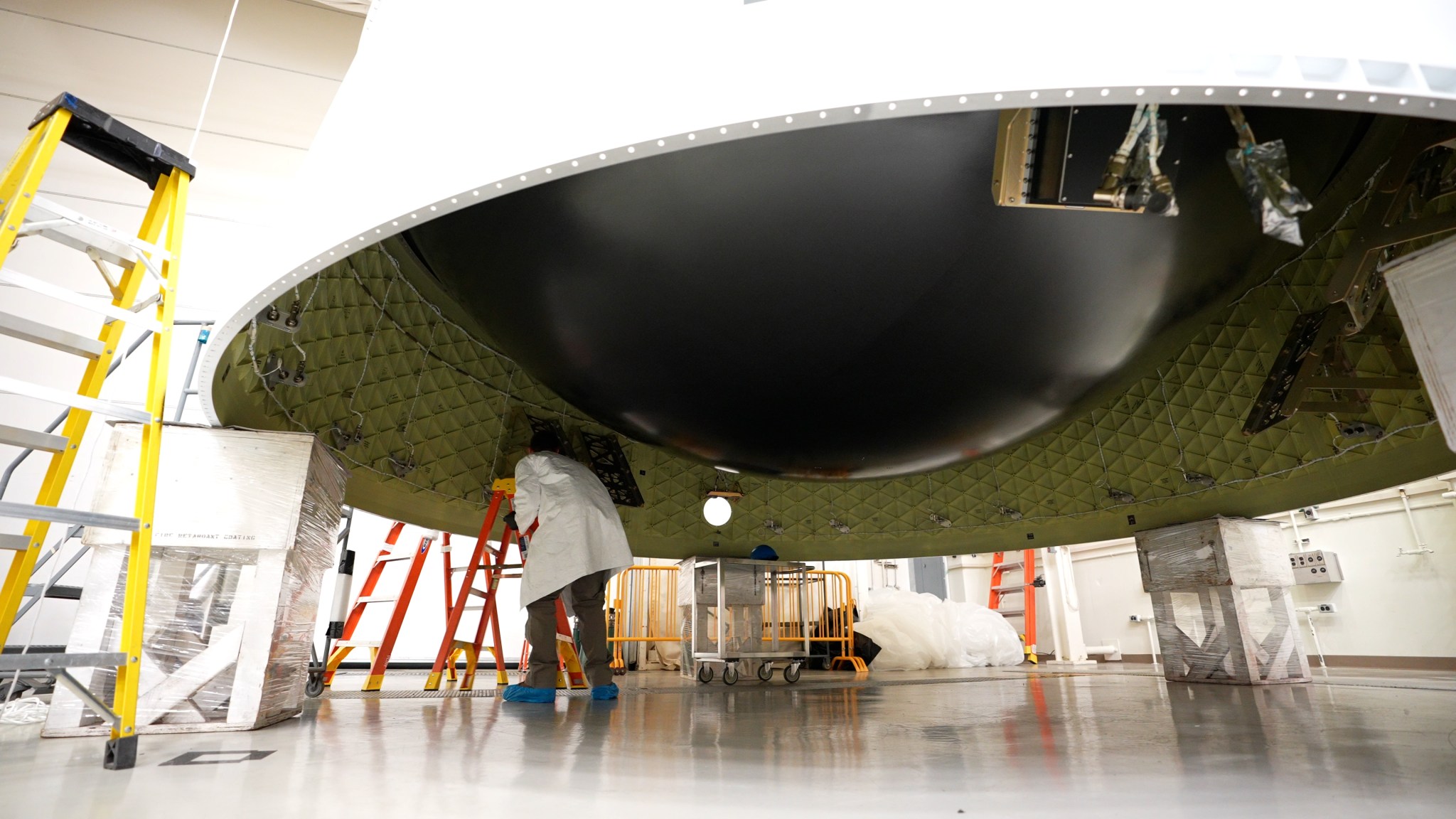
“The diaphragm is a composite, dome-shaped structure that isolates the volume above the ICPS from that below Orion,” said Brent Gaddes, lead for the Orion stage adapter, in the Spacecraft/Payload Integration & Evolution Office for the SLS Program at Marshall. “It serves as a barrier between the two, preventing the highly flammable hydrogen gas that could escape the rocket’s propellant tanks from building up beneath the Orion spacecraft and its crew before and during launch.”
At five feet tall and weighing in at 1,800 pounds, the adapter is the smallest major element of the SLS rocket that will produce more than 8.8 million pounds of thrust to launch four Artemis astronauts inside Orion around the Moon. The adapter is fully manufactured by engineering teams at Marshall.
NASA is working to land the first woman and first person of color on the Moon under Artemis. SLS is part of NASA’s backbone for deep space exploration, along with Orion and the Gateway in orbit around the Moon, and commercial human landing systems. SLS is the only rocket that can send Orion, astronauts, and supplies to the Moon in a single launch.
25 Years Ago: NASA, Partners Begin Space Station Assembly
On Dec. 6, NASA marked 25 years since the first two elements of the International Space Station were launched and joined in space. Today, the space station remains a global endeavor, with 273 people from 21 countries now having visited the microgravity laboratory and has hosted more than 3,700 research and educational investigations from people in 108 countries and areas.
On Nov. 20 and Dec. 4, 1998, Zarya and Unity, respectively, launched into orbit as the first two modules of the International Space Station. On Dec. 6, 1998, the space shuttle Endeavour STS-88 crew, NASA astronauts Bob Cabana, Rick Sturckow, Nancy Currie, Jerry Ross, and James Newman, along with Russian Space Agency (now Roscosmos) cosmonaut Sergei Krikalev, captured the Zarya module with the space shuttle’s robotic arm and mated it to Unity.
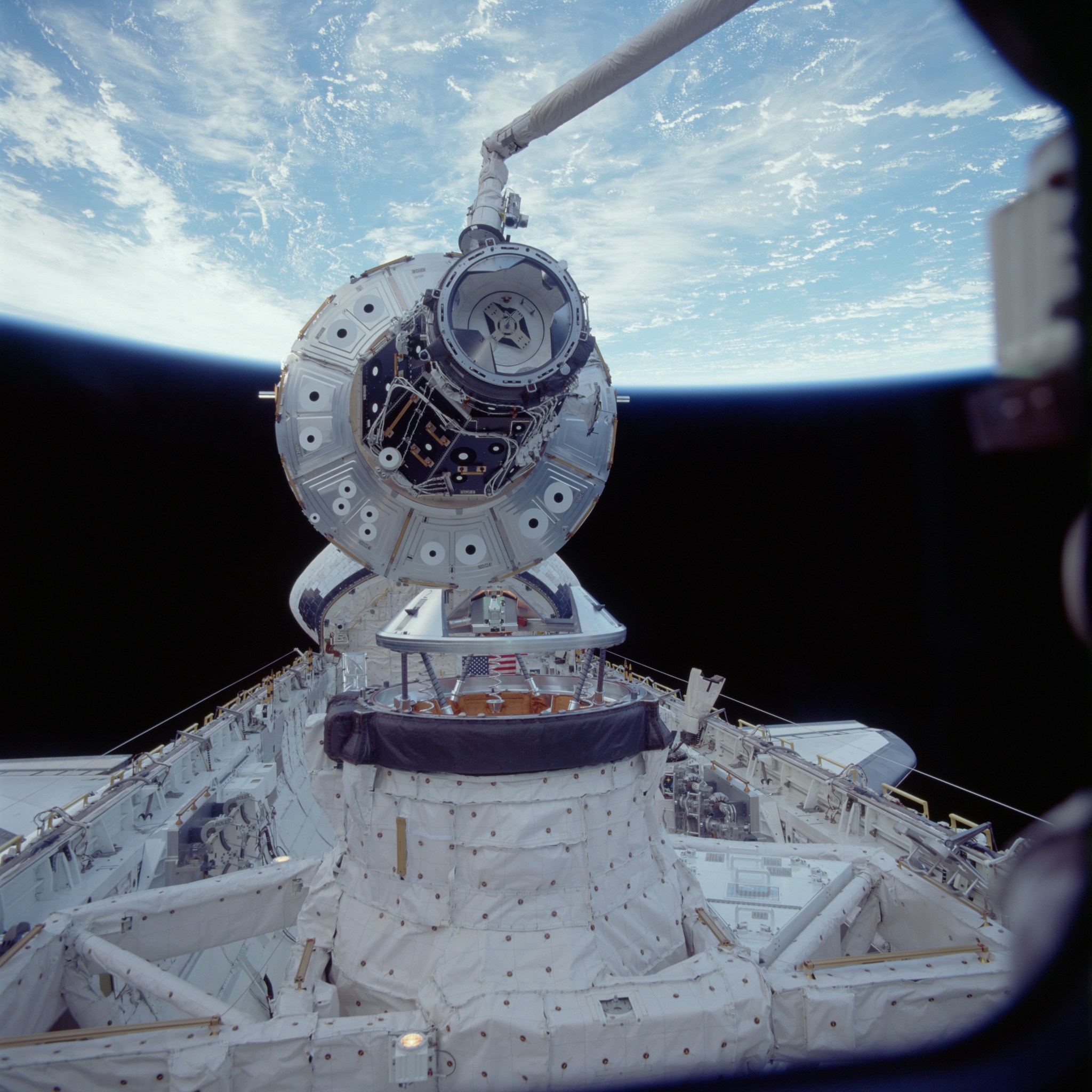
Engineers thousands of miles apart designed and built the two modules and the elements first met in space. The STS-88 crew, commanded by Cabana, spent the next few days and three spacewalks making connections between the two modules before releasing the early station.
Since the joining of Zarya and Unity, the space station has grown with additions from international partners, resulting in the largest and most complex piece of technology constructed in space.
In November 2000, the space station received its first long-duration residents, Expedition 1, including NASA astronaut William Shepard, and Roscosmos cosmonauts Krikalev and Yuri Gidzenko. Since that time, international teams have kept the space station permanently inhabited, performing routine operations and maintenance including dozens of spacewalks, and conducting world-class research in a wide array of scientific disciplines. From visiting spacecraft with cargo, crew, and private astronauts, to spacewalks for station upgrades, to science investigations and technology demonstrations, to commercial activities, to public outreach and STEM downlinks, the International Space Station is a busy orbital outpost and microgravity laboratory.
The seven-member Expedition 70 crew called down to Earth on Dec. 6 and discussed with NASA Associate Administrator Bob Cabana and International Space Station Program Manager Joel Montalbano the orbital outpost’s accomplishments since the assembly era began on Dec. 6, 1998. Cabana was the commander of Endeavour when both modules were robotically mated then outfitted during a series of spacewalks. Montalbano, NASA’s sixth station leader since the program’s inception, said, “We want to celebrate today all the people who designed, built, and operate the International Space Station.”
The Payload Operations Integration Center at NASA’s Marshall Space Flight Center operates, plans, and coordinates the science experiments onboard the space station 365 days a year, 24 hours a day.
Hubble Captures a Cluster in the Cloud
A striking Hubble Space Telescope image shows the densely packed globular cluster known as NGC 2210, which is situated in the Large Magellanic Cloud (LMC). The LMC lies about 157,000 light-years from Earth and is a so-called satellite galaxy of the Milky Way, meaning that the two galaxies are gravitationally bound. Globular clusters are very stable, tightly bound clusters of thousands or even millions of stars. Their stability means that they can last a long time, and therefore globular clusters are often studied to investigate potentially very old stellar populations.
In fact, 2017 research using some of the data that were also used to build the image revealed that a sample of LMC globular clusters were incredibly close in age to some of the oldest stellar clusters found in the Milky Way’s halo. They found that NGC 2210 specifically probably clocks in at around 11.6 billion years old. Even though this is only a couple of billion years younger than the universe itself, it made NGC 2210 by far the youngest globular cluster in their sample. All other LMC globular clusters studied in the same work were found to be even older, with four of them over 13 billion years old. This tells astronomers that the oldest globular clusters in the LMC formed contemporaneously with the oldest clusters in the Milky Way, even though the two galaxies formed independently.
As well as being a source of interesting research, this old-but-relatively-young cluster is also extremely beautiful, with its highly concentrated population of stars. The night sky would look very different from the perspective of an inhabitant of a planet orbiting one of the stars in a globular cluster’s center: the sky would appear to be stuffed full of stars, in a stellar environment that is thousands of times more crowded than our own.
Webb Stuns with New High-Definition Look at Exploded Star
Like a shiny round ornament ready to be placed in the perfect spot on a holiday tree, supernova remnant Cassiopeia A (Cas A) gleams in a new image from NASA’s James Webb Space Telescope. As part of the 2023 Holidays at the White House, First Lady of the United States Dr. Jill Biden debuted the first-ever White House Advent Calendar. To showcase the “Magic, Wonder, and Joy” of the holiday season, Dr. Biden and NASA are celebrating with this new image from Webb.
While all is bright, this scene is no proverbial silent night. Webb’s NIRCam (Near-Infrared Camera) view of Cas A displays this stellar explosion at a resolution previously unreachable at these wavelengths. This high-resolution look unveils intricate details of the expanding shell of material slamming into the gas shed by the star before it exploded.
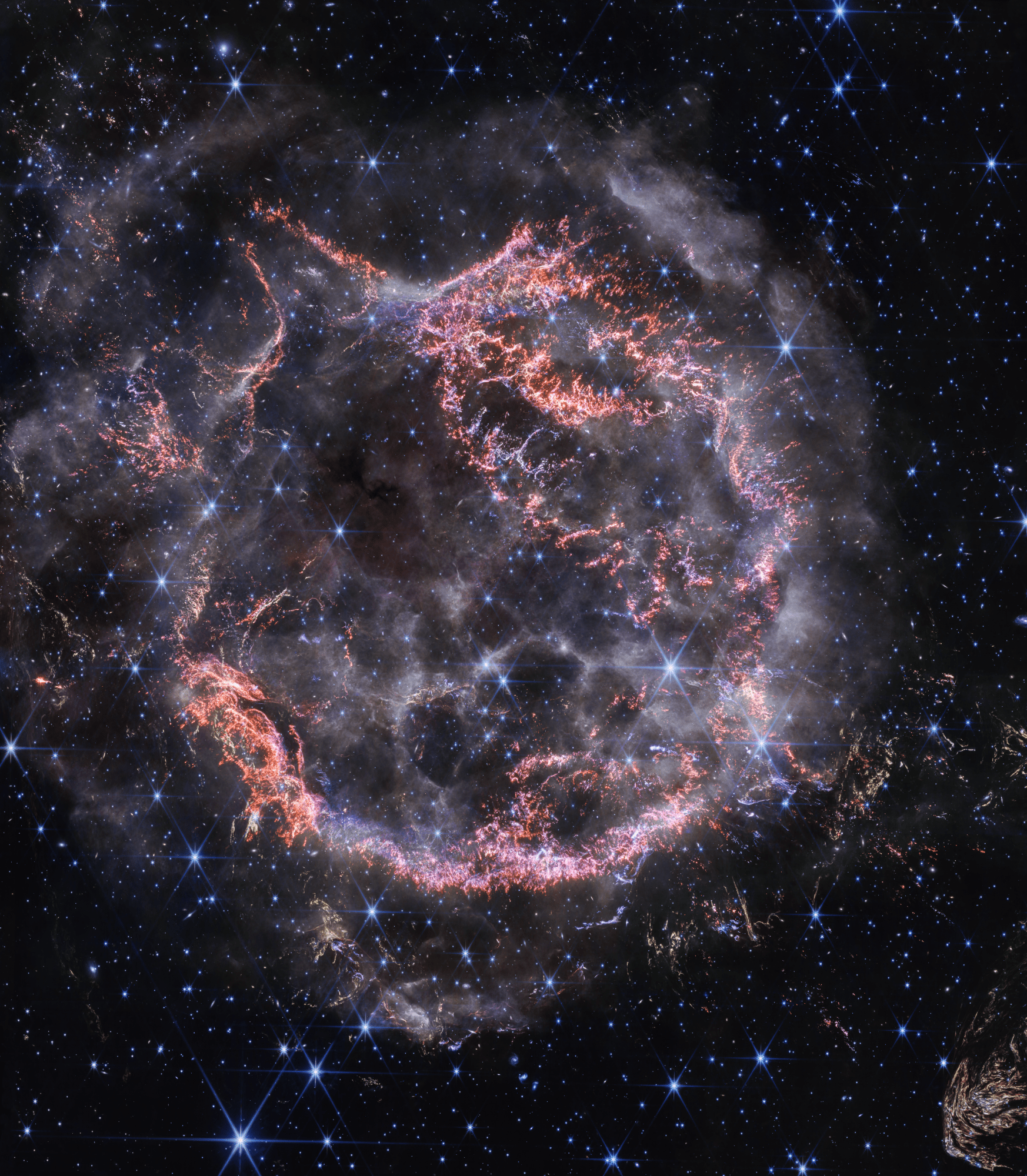
Cas A is one of the most well-studied supernova remnants in all of the cosmos. Over the years, ground-based and space-based observatories, including NASA’s Chandra X-Ray Observatory, Hubble Space Telescope, and retired Spitzer Space Telescope have assembled a multiwavelength picture of the object’s remnant.
However, astronomers have now entered a new era in the study of Cas A. In April 2023, Webb’s MIRI (Mid-Infrared Instrument) started this chapter, revealing new and unexpected features within the inner shell of the supernova remnant. Many of those features are invisible in the new NIRCam image, and astronomers are investigating why.
The James Webb Space Telescope is the world’s premier space science observatory. Webb is solving mysteries in our solar system, looking beyond to distant worlds around other stars, and probing the mysterious structures and origins of our universe and our place in it. Webb is an international program led by NASA with its partners, ESA (European Space Agency) and the Canadian Space Agency.
Gorgeously Green: Geminids Peak Dec. 13-14
By Lauren Perkins
The Geminid meteor shower is active for much of December, but the peak occurs the night of the 13th into the morning of the 14th. Meteor rates in rural areas can be upwards of one per minute this year with minimal moonlight to interfere.
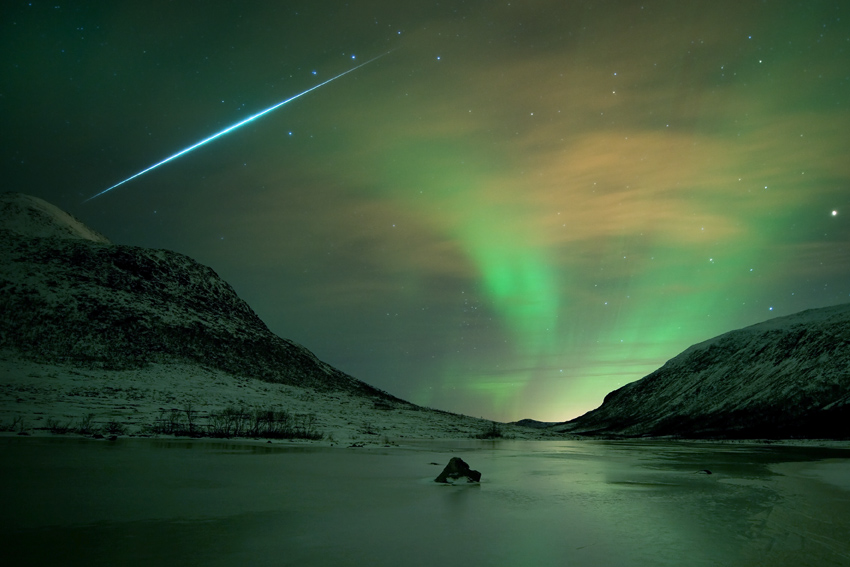
Bill Cooke, lead for the Meteoroid Environment Office at NASA’s Marshall Space Flight Center, shares why the Geminids particularly excite him: “Most meteors appear to be colorless or white, however the Geminids appear with a greenish hue. They’re pretty meteors!”
Depending on the meteor’s chemical composition, the meteor will emit different colors when burned in the Earth’s atmosphere. Oxygen, magnesium, and nickel usually produce green.
As with all meteor showers, all you need is a clear sky, darkness, a bit of patience, and perhaps warm outer wear and blankets for this one. You don’t need to look in any particular direction; meteors can generally be seen all over the sky.
Perkins, a Media Fusion employee, supports the Marshall Office of Communications.





























